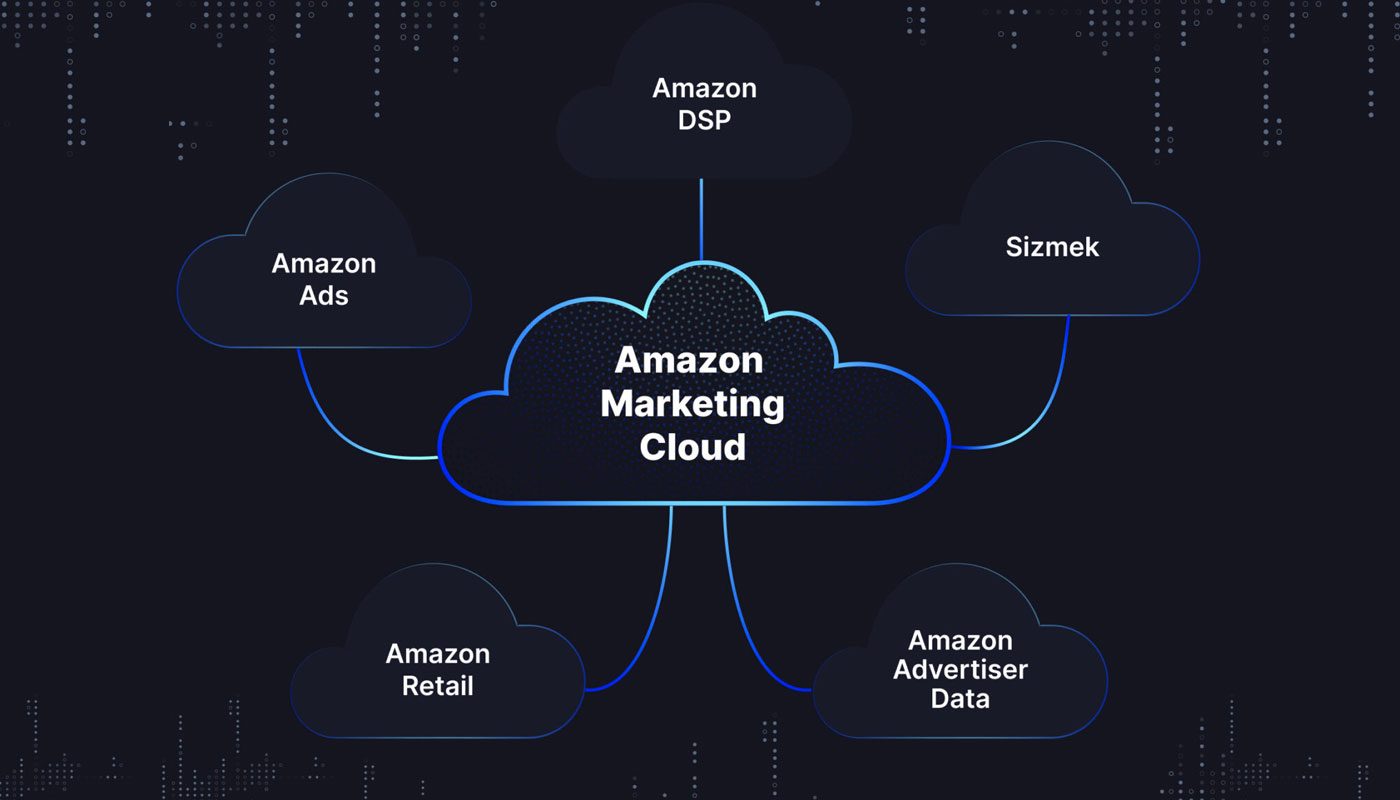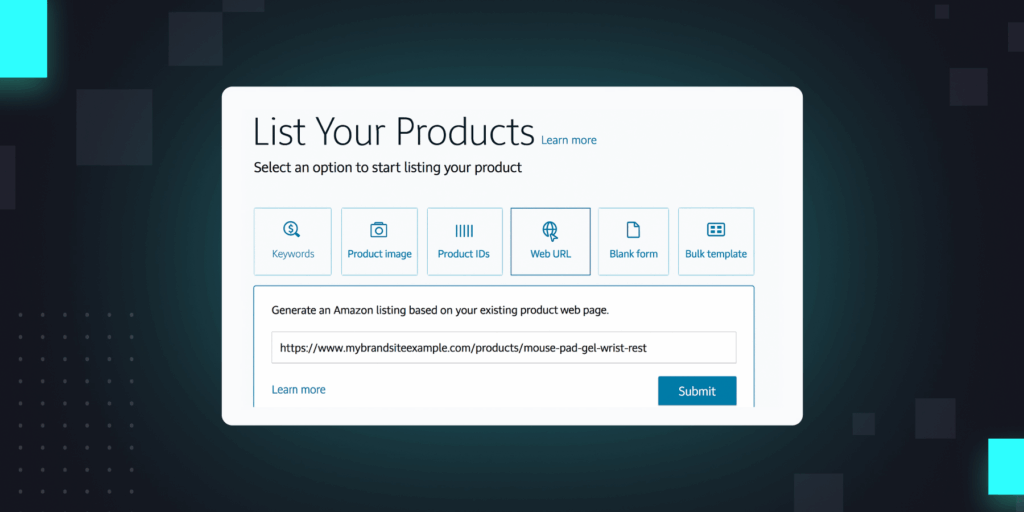Right now, everyone is talking about Amazon Marketing Cloud. Amazon’s new analytics tool, which the e-commerce giant introduced in 2019, is the most powerful way to measure your performance on the platform.
Ever wished you could track a shopper’s journey from start to finish? Want to segment out shoppers based on their overall spending, a.k.a. their Life-Time Value?
With Amazon Marketing Cloud, all of that is finally possible. Most lingering questions you have about your Amazon customers can now be answered.
In short, Amazon Marketing Cloud lets brands under the hood of Amazon’s vast data infrastructure for the first time. It’s secure, privacy-safe, and powerful.
What is Amazon Marketing Cloud?
Amazon Marketing Cloud is a data clean room that allows brands to track shoppers throughout their entire customer journey.
At its most basic, Amazon Marketing Cloud brings together reporting for all kinds of touchpoints on and off Amazon.
Think of it like this: When someone is shopping on Amazon, they interact with your brand in many different ways. They might click on your product page, view your Sponsored Brands ad, view your DSP ad, and so on. You can even add data from other data sources to see your reach beyond the Amazon ecosystem.
Normally, in the Amazon console, you have no way of knowing when it’s the same customer taking all of these actions. That data is fragmented across many separate reports. You can’t know that the shopper who viewed your product detail page also saw your DSP ad and, a week later, your Sponsored Products ad.
AMC solves this dilemma by unifying disparate ad and retail reports for you. In AMC, you can view every touchpoint a shopper had with you, allowing you to evaluate the success of your campaigns and run new ads accordingly.
What does “data clean room” mean?
Once you start researching Amazon Marketing Cloud, you’re quickly going to stumble across the term “data clean room.” Basically, a data clean room is a data privacy infrastructure that keeps shoppers from being individually identifiable.
When you use AMC, you won’t be able to access any personal identifiable information (PII) about the shoppers you’re analyzing.
Instead, each shopper is identified through a series of anonymized “user_id” codes. These are designed to protect shopper privacy.
Here’s how it works: Amazon assigns a unique user_id to every shopper who has an ad impression or click. In AMC, you can unify these user_ids, and therefore follow a customer throughout their whole journey. But you can’t see who the shopper is.
In essence, Amazon Marketing Cloud stitches together the data from all ad impressions and clicks, while still maintaining shopper anonymity.
What can I do with Amazon Marketing Cloud?
Here are a few key use cases:
#1. Find the most effective succession of ads
If you’re a heavy ad spender on Amazon, your shoppers are probably seeing more than one of your ads. In AMC, you can now map out a bunch of different customer journeys in order to find the most effective order of ads.
AMC can tell you, for example, if a DSP ad —> Sponsored Brands ad —> Sponsored Products ad is the journey that resulted in the highest conversion rate.
#2. Build and re-target audiences
In AMC, you can segment out any group of 2,000+ shoppers. Let’s say you want to create a group of people who added your product to their carts in the last week but didn’t pull the trigger on a purchase. You can create this audience in AMC, and then you can push that audience to DSP to re-target them later.
#3. Leverage New-To-Brand metrics for Sponsored Products ads
One of the biggest pain points in Amazon’s sponsored ads ecosystem is the opacity of New-To-Brand statistics.
New-To-Brand tells you the share of your conversions that come from first-time buyers of your brand. Identifying ad campaigns that have a high New-To-Brand rate is key to boosting incrementality. But Amazon doesn’t give New-To-Brand data for Sponsored Products, its most popular ad format. The only way to get that data is to use Amazon Marketing Cloud.
Can I upload my first-party data to Amazon Marketing Cloud?
In Amazon Marketing Cloud, you can merge data from your DTC website with data from Amazon. Doing so unlocks a full portrait of your customer journey. It also lets you exclude your DTC shoppers from your Amazon DSP campaigns. That way, you can be sure you aren’t cannibalizing sales.
To do this: Go to the AMC Console, and upload a file of first-party data, which can include customer emails, customer phone numbers, and customer actions (website visits, newsletter subscriptions, etc).
Amazon will automatically encrypt and anonymize this data for you, and then compare it against its own data. When you upload your first-party data to AMC, you can see how a DTC website visitor interacted with you on Amazon.
Did the shopper who added a product to cart on your DTC site later buy that product on Amazon? Amazon Marketing Cloud is the only way to find out.
What are Paid Features in AMC?
For even more sophisticated audience creation and targeting capabilities, you can leverage a tool called Paid Features. These features offer you a number of new use cases for your custom audiences, including the ability to track people who bought a product organically.
With Paid Features, you can also measure customers who weren’t exposed to ads. You can directly compare actions taken by customers who have seen your ads against those who haven’t. It’s a great way to test how effective your ads actually are.
Other Paid Features are designed specifically for car brands and brands with presences in physical stores. We go deeper into Paid Features here.
How do I actually use Amazon Marketing Cloud?
Amazon Marketing Cloud is free to use for anyone who spends on DSP ads.
But to pull data from Amazon Marketing Cloud, you need to write queries in the coding language SQL. Obtaining SQL knowledge is the only way to leverage Amazon’s vast data store.
It’s easy to run queries one at a time in the AMC Console. But what if you need to run these queries at scale, across many different accounts?
Let’s say you’re an agency that wants to focus on Subscribe & Save conversions for all of your clients. It’s a pain to write and run separate count queries for every single account in your arsenal. What if you had 100 clients, each of whom has 3 sub-brands? That means manually running 300 queries every week.
Using a tech partner like Intentwise, you can schedule queries to run across hundreds of AMC instances at once. You can set all 300 of those queries to run at 1 a.m., for instance, so the data is always ready when you wake up in the morning. This can’t be done in the regular AMC console.
We do so much more, too. For instance, think about data visualizations. AMC datasets are massive, and it’s not always intuitive to build reports that visualize the data.
To simplify the process, we first clean up your data for you, removing null data and other potential problems. Then we leverage our sophisticated visualization templates, designed specifically for AMC. You can access these best-in-class dashboards for AMC with a single click.
Where can I learn more about Amazon Marketing Cloud?
Intentwise recently published what we believe is the most detailed resource on Amazon Marketing Cloud available anywhere. Our 16-page report, The Amazon Marketing Cloud Strategy Guide, takes you through all of the nuances of the platform, the best practices, and more.







